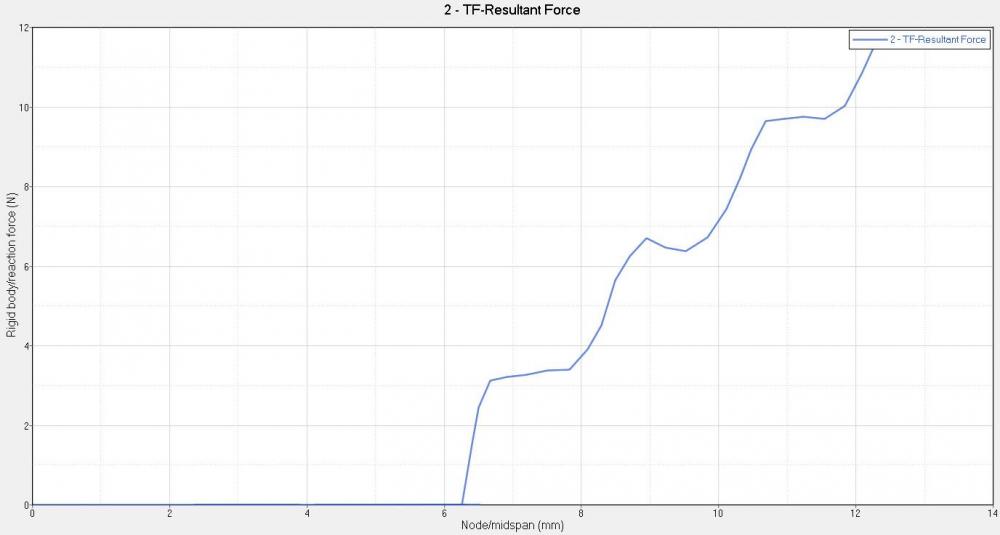Hi,
I want to carry out material (law 19 and 58) parameter fitting with Hyperstudy to match results of experimental four-point bend test.
The testing protocol consists of two stages:
-initial inflation to prescribed pressure and positioning under gravity
-four-point bend test (rigid body impactor measuring reaction force which is plotted as a function of midspan deflection).
Behaviors of inflatable fabric structures often involve coupled effects from inflation pressure such as fluid-structure interactions (FSI’s), thermomechanical coupling and nonlinear constitutive responses of the materials. Because of this it is nearly impossible to predict the position after initial stage: the time and deflection are unknown when the impactor initially comes into contact with the inflatable. I will use a similar approach as in MV-3000 & 3010, where time history output curve is optimized to match the targeted experimental curve which starts form 0 force @ 0 deflection.
The question is how to match the time history output with the experimental curve so the former also begins at 0 deflection?
<?xml version="1.0" encoding="UTF-8"?>
Unable to find an attachment - read this blog